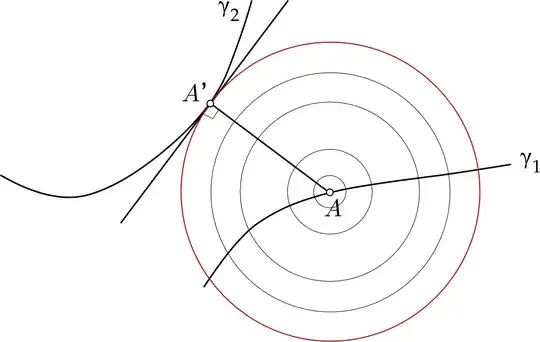Take curves $\gamma_1,\gamma_2$ and let the points at minimum distance be $P_1,P_2$.
Suppose the tangents to $\gamma_1$ at $P_1$ and to $\gamma_2$ at $P_2$ are not parallel. Then they meet somewhere; let's say they meet further to the "left" along each tangent. That means we can draw parallel lines $\ell_1$ through $P_1$ and $\ell_2$ through $P_2$, such that as you go to the "left", the tangents are closer than $\ell_1$ and $\ell_2$. But points on $\gamma_1$ sufficiently close to $P_1$ are the same side of $\ell_1$ as the tangent is, and similarly for $\gamma_2$, meaning that going a small distance along each curve to the "left" gives two points which are closer together.
Now suppose the tangents are parallel but the normals do not coincide. Say the line segment $P_1P_2$ is to the "left" of the normal to $\gamma_1$ at $P_1$, and so to the "right" of the normal to $\gamma_2$ at $P_2$. Now we can draw parallel lines $\ell'_1,\ell'_2$ through $P_1$ and $P_2$ which are perpendicular to $P_1P_2$, and if we move a small amount to the "left" of $P_1$ along $\ell'_1$ and to the "right" of $P_2$ along $\ell'_2$, we get closer together. But as we move "left" from $P_1$ the tangent lies on the side of $\ell'_1$ which is closer to $\ell'_2$ and similarly for moving "right" from $P_2$. Since the curves lie between the tangents and $\ell'_1,\ell'2$ if we move a sufficiently small distance, this means they are even closer together.
